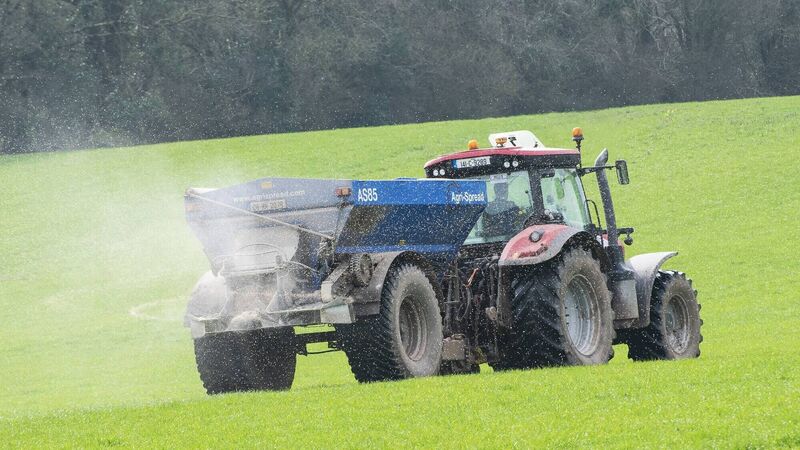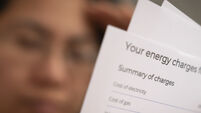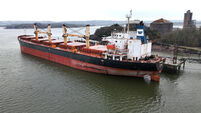Hoping that fertiliser prices will fall and delaying spreading is fools folly

Rumours are emanating that CAN fertiliser will cost more than €600 per ton, with Urea possibly north of €900 per ton
Farmers risk having their 2022 profits eroded to a significant degree by rising energy, feed and fertiliser prices.
Any cash flow left over from what has been a relatively good year will quickly get soaked up into input costs which are typically front-loaded to the start of the following year. Us farmers are price takers and only a small amount of control over input costs or indeed sales prices is achievable.
But still, the savings can mount up. From a business planning perspective, the primary concern must first be securing enough funding to afford whatever inputs you need next Spring.
Rumours are emanating that CAN fertiliser will cost more than €600 per ton, with Urea possibly north of €900 per ton whilst on the feed side balancer-type rations are likely to edge close to, if not more than, €400 per ton. This is eye-watering stuff with fertiliser prices more than doubling and feed prices up 33%.
For a typical mid-sized farmer feeding 120 tons of ration and using 30 tons of fertiliser per year, the rise in input costs will add €23,400 of additional costs into the system on top of the usual costs incurred.
Given the huge increase in input costs there is a strong possibility that some co-ops and merchants may give priority to cash customers, or at a minimum may not be willing to extend credit beyond the limits which have previously been in place for customers.
Co-ops and merchants are not banks after all and will themselves experience a significant tie-up in cash flow when bulk purchasing from wholesale merchants. As a plan of action, assess with your merchant/co-op where your credit limit will be set for the Spring. This will, for some, be a deciding factor as to the amount of feed or fertiliser that can be bought without external help.
If after discussing your credit limits, you are concerned that you may not have sufficient capacity to buy what you need then you will need to assess what other sources of credit or funding may be available to you. Whilst high fertilizer and feed prices are not palatable the reality is that grass and crops will not grow and animals will not thrive without some level of spending on fertilizer and feed.
Hoping that fertiliser prices will fall and significantly delaying spreading as part of that expectation is fools folly. Remember the fertiliser you will need next Spring has probably already been made in continental Europe, and fertiliser companies having themselves suffered record input costs for gas will not willingly sell fertiliser on the cheap next Spring even if sales volume drops.
That being said, as a strategy I wouldn’t recommend buying all of next year’s fertiliser upfront, consider buying each month for the month ahead. There is some expectation that fertiliser production this year destined for next year’s supply will have reduced significantly due to abhorrent gas prices and availability may be as much an issue as price, hence the strategy to buy in tranches for the months ahead.
Remember 60% of grass growth for the year happens before 30th May and as such it is poor economics to skimp on fertiliser early in the year especially when that is the stage at which grass can react best to fertiliser with a view to going out heavy later in the year.
That being said, make optimal use of slurry early in the year such that bought-in fertilisers are just used to bridge the crop requirements. The forward grain prices for harvest 2022 are even higher than current prices meaning having an adequate stock of silage in your pit heading into winter 2022 will be even more important next year.
On the feed side, an independent analysis of the quality of your silage in the pit is well worthwhile, armed with this information you can assess the quantum of supplementary feeding you need to drive the performance of your herd. For dairy farmers, the status of nutrition fed in the two months post-calving will have a huge bearing on the productivity and fertility of the herd for the remainder of the year.
Making maximum use of grass next spring will be a critical component of reducing feed prices and can result in sparing of silage for winter 2022. On the energy side, farmers not in contract may be experiencing price rises of over 50% with typical energy costs coming in at in excess of 22c/kw.
Reducing usage is something that should be considered regardless of the price, options to consider include turning down thermostats, and putting heaters on timers, changing milking times to coincide with collections, adjusting automatic scraper timers, recycling plate cooler water to pre-storage for water heaters.
By switching suppliers and availing of new customer discounts or haggling with your existing supplier, it is possible to get discounts of more than 20% on the price per KW.
For some users, the savings from pricing electricity can run to several thousand euro. Set a reminder for when your contract is to terminate to prevent slippage into higher prices.













